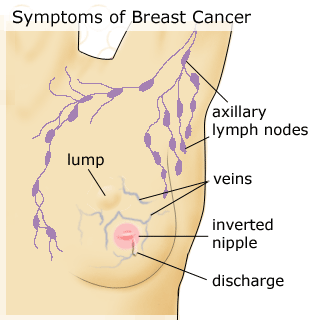New UT Arlington study links BPA and breast cancer tumor growth
UT Arlington biochemists say their newly published study brings researchers a step closer to understanding how the commonly used synthetic compound bisphenol-A, or BPA, may promote breast cancer growth.
Subhrangsu Mandal, associate professor of chemistry/biochemistry, and Arunoday Bhan, a PhD student in Mandal’s lab, looked at a molecule called RNA HOTAIR. HOTAIR is an abbreviation for long, non-coding RNA, a part of DNA in humans and other vertebrates. HOTAIR does not produce a protein on its own but, when it is being expressed or functioning, it can suppress genes that would normally slow tumor growth or cause cancer cell death.
High levels of HOTAIR expression have been linked to breast tumors, pancreatic and colorectal cancers, sarcoma and others.
UT Arlington researchers found that when breast cancer and mammary gland cells were exposed to BPA in lab tests, the BPA worked together with naturally present molecules, including estrogen, to create abnormal amounts of HOTAIR expression. Their results were published online in February by the Journal of Steroid Biochemistry and Molecular Biology.
“We can’t immediately say BPA causes cancer growth, but it could well contribute because it is disrupting the genes that defend against that growth,” said Mandal, who is corresponding author on the paper.
“Understanding the developmental impact of these synthetic hormones is an important way to protect ourselves and could be important for treatment,” he said.
 Bhan is lead author on the new paper. Co-authors include Mandal lab members Imran Hussain and Khairul I Ansari, as well as Linda I. Perrotti, a UT Arlington psychology assistant professor, and Samara A.M. Bobzean, a member of Perrotti’s lab.
Bhan is lead author on the new paper. Co-authors include Mandal lab members Imran Hussain and Khairul I Ansari, as well as Linda I. Perrotti, a UT Arlington psychology assistant professor, and Samara A.M. Bobzean, a member of Perrotti’s lab.
“We were surprised to find that BPA not only increased HOTAIR in tumor cells but also in normal breast tissue,” said Bhan. He said further research is needed, but the results beg the question - are BPA and HOTAIR involved in tumor genesis in addition to tumor growth?
BPA has been widely used in plastics, such as food storage containers, the lining of canned goods and, until recently, baby bottles. It belongs to a class of endocrine disrupting chemicals, or EDCs, which have been shown to mimic natural hormones. These endocrine disruptors interfere with hormone regulation and proper function of human cells, glands and tissue. Previous studies have linked BPA to problems with reproductive development, early puberty, obesity and cancers.
Under normal circumstances, estrogen regulates HOTAIR, turning its expression on and off through interaction with molecules called estrogen-receptors, or ERs, and estrogen receptor-coregulators, or ER-coregulators. The new study found that BPA disrupts the normal function of the ERs and the ER-coregulators when estrogen was present and when it wasn’t, potentially implicating it in tumor growth in a variety of cancers.
 “Research work is at its best when results can shed light on issues of public concern. Dr. Mandal and his team are using their expertise to do just that. Their findings continue to advance what we know about how the chemicals in our environment could be affecting us in unseen ways,” said Pamela Jansma, dean of the UT Arlington College of Science.
“Research work is at its best when results can shed light on issues of public concern. Dr. Mandal and his team are using their expertise to do just that. Their findings continue to advance what we know about how the chemicals in our environment could be affecting us in unseen ways,” said Pamela Jansma, dean of the UT Arlington College of Science.
Researchers saw similar results when they exposed HOTAIR to a synthetic estrogen called diethylstilbestrol (DES). DES has been shown to increase risks of breast cancer and other health problems in women who used it and their daughters. It was formerly used as a hormone replacement and as an attempt to prevent pregnancy complications.
The new paper is called “Bisphenol-A and diethylstilbestrol exposure induces the expression of breast cancer associated long noncoding RNA HOTAIR in vitro and in vivo.” It is available here: sciencedirect.com/science/article/pii/S0960076014000314.
The National Institutes of Health and American Heart Association funded Mandal’s research into endocrine disrupting chemicals.
The University of Texas at Arlington is a comprehensive research institution and the second largest institution in The University of Texas System. The Chronicle of Higher Education ranked UT Arlington as the seventh fastest-growing public research university in 2013. U.S. News & World Report ranks UT Arlington fifth in the nation for undergraduate diversity. Visit http://www.uta.edu to learn more and follow #UTAdna.
###
Media Contact: Traci Peterson, Office:817-272-9208, Cell:817-521-5494, tpeterso@uta.edu
The University of Texas at Arlington